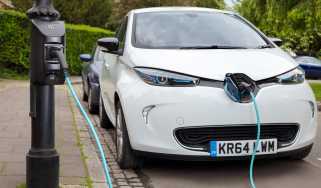Toyota Aygo (2014-2021) review - MPG, CO2 and running costs
Frugal, clean and warrantied to the hilt. Living within your means can be fun after all…

Although the 1.0 VVT-i is fundamentally the same unit as used by the Toyota Aygo’s predecessor, it has been re-engineered for the current model. A higher compression ratio of 11.5:1, a new low-friction timing chain and a cylinder head with built-in exhaust manifold to save weight have all helped to improve fuel efficiency and cut emissions.
The mods allow Toyota to boast of raising the engine’s thermal efficiency (the amount of the fuel’s energy it converts to power) to a class-leading 37%. That’s impressive, but it’s a cautionary thought that even in an economy-minded city car like this you’re losing 63% of the energy in your petrol tank to (mainly) waste heat and friction. And that’s in those rare moments when the engine is running at peak efficiency.
Still, the numbers aren’t too bad. Toyota claims a maximum fuel economy of 56.4mpg for the five-speed manual model, with CO2 emissions from 114g/km. while the auto returns up to 54.3mpg and 119g/km of CO2.
Insurance groups
Perhaps the implied ‘youth’ appeal of its zingy styling makes a difference, but it’s more likely to be design details like those relatively expensive projector headlamps that mean the Toyota Aygo will cost you more to insure than some of its more staid-looking city car rivals.
However, Toyota has included its Safety Sense pack as standard for the latest Aygo range, which means all cars are in group six for insurance.
By way of contrast the entry-level Hyundai i10 starts the bidding off with an impossible-to-beat insurance group one, while the Skoda Citigo, VW up! And SEAT Mii all undercut the Toyota’s group ratings too.
Depreciation
With Toyota expecting to sell a quarter of all European Aygos here in the UK, there isn’t likely to be a shortage of used models on the market. The Aygo is expected to retain around 39% of its original list price after three years and 36,000 miles.








